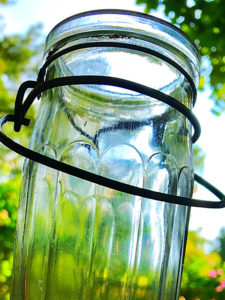This is the first installment of a fictional piece that I hope offers real-life metaphors for all. The story may be continued. …
The Seanchaí
(shan-a-key)
By Arthur H. Gunther
It was a bit of an amble on the N15 that Dermont Bonner took to Killygordon from Strabane, but this gave the seanchaí time to perfect the next story, to pad it out. Dermot could stretch words as well as gab, and in Donegal he would have to fit the tale to the Ulster Irish.
(The story teller, the seanchaí, was the people’s entertainment for centuries, especially in the very rural Irish areas without books and literacy. He was the keeper of legend, folklore and myth, the custodian of tradition, the man before there was the wireless voice and the telly talking-image. To this day there is reverence and thirst for the seanchaí — anyone who keeps the child in him has an ear cocked for the tale.)
You can be sure Dermot had his grasp on the spoken word, and that day on the N15 he was headed to the local for some trade. The seanchaí had been in County Tipperary last, at a teach tábhairne
with a sign above that identified it as Lyon’s Pub. It doubled as a hardware store and undertaker’s, so there was much to add to the regular story just by knowing the bio, if the planned tale was not already raising the eyebrows or the hairs on the skin or pulling the tears.
This heritage pub offered the tourist atmosphere, what with its wood paneling and worn brass bar taps, but it was the regulars, the neighborhood, that owned the place. They tarried every day and evening, absorbing the fragrant deepness in its walls of not only a million pints of Guinness but the wakes of many a passing, the taps at Lyons pouring from one generation to another.
At the teach tábhairne Dermot kept them hanging on his words by telling the story of Molly McGuire, who had given Kevin Shaughnessy the boot after eight months. He was climbing to Heaven then but soon would be down in purgatory at least. Kevin was intending to walk the marriage path, finally to give up the freedom and opportunity of bachelorhood, something he thought near-impossible. There had been much gaiety in that carefree life, but Molly had eyes leading to soul, and once he took the deep look, he was changed. Alas, she ended the thought, no praise be, with a gentle but firm get lost.
This was ordinary, of course, two people not to continue on the same road at the diverge. But Kevin was smitten, had gone past reasoning, and the abruptness of Molly’s answer saw him confined to a long but solitary life on a small farm in Portrane, pigs and all. It was better than ending it at the Cliffs of Moher, though some days Kevin was not sure. Molly? She married Sean, the Market Street butcher, had the five kids, was a good wife and all. But her Sean never saw beyond the great greenish-blue color of her eyes, as Kevin did. It was a life.
In the booth near the road window at Lyons, Mary Ahern rubbed her cheek of a few tears, recalling her own journey with a Kevin but also tilting her head toward the shoulder of Martin, her Sean. A life.
It was a popular tale that the seanchaí told, adding local color. It was not always to the pig farm at Portrane that Kevin exiled himself. He could instead be a hermit on the Enchanted Islands off Donegal.
But Dermot would not tell the Molly-Kevin story in the far North. No, he had been up there many a time, and it was different than Dublin, or Cork, Limerick or Belfast.
Dún na nGall, “fort of the foreigners,” is a land of where it’s different. Everything. Bordered by the Republic’s County Leitrim and Counties Londonderry, Tyrone and Fermanagh of Northern Ireland, there is distinct cultural identity. There are also long, gloriously sunny beaches and majestic mountain peaks of great beauty, trade off for some brutal weather and desolation, a place of extremes.
And why wouldn’t it be, so far north that a quick jaunt might land you in the Atlantic Ocean headed for Iceland if you kept to port 15 degrees. It is this sense of place, perhaps, that keeps a Donegal person on top of things.
(to be continued, perhaps)
The writer is a retired newspaperman. ahgunther@yahoo.com

